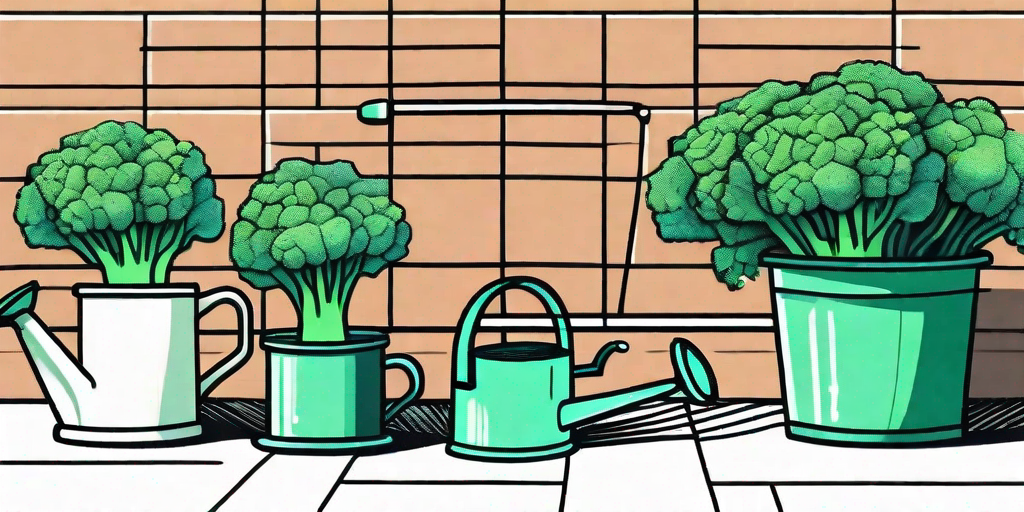
Welcome to the world of home gardening, where the grass is always greener, especially when you're growing broccoli. This cruciferous veggie, known for its high nutritional value and distinctive taste, can be a delightful addition to your home garden. But how do you transform a tiny seed into a towering broccoli plant? Fear not, dear reader, for we're about to embark on a journey of green thumbs, soil types, and the bliss of homegrown broccoli.
The Beauty of Broccoli: Why Grow It at Home?
Before we dive into the "how", let's explore the "why". Broccoli, a member of the cabbage family, is a powerhouse of nutrients. It's packed with vitamins A, C, and K, as well as fiber and potassium. But the benefits of broccoli don't stop at your plate. Growing your own broccoli can be a rewarding and therapeutic hobby. Plus, it's a surefire way to impress your friends and family with your horticultural prowess.
Moreover, growing broccoli at home means you know exactly where your food is coming from. No more worrying about pesticides or how long your veggies have been sitting on a supermarket shelf. Your broccoli will be as fresh and organic as it gets.
Getting Started: The Broccoli Basics
Now that we've covered the "why", let's move on to the "how". Growing broccoli isn't rocket science, but it does require some basic knowledge and preparation. So, let's roll up our sleeves and get down to the nitty-gritty of broccoli cultivation.
First things first, you'll need to choose the right variety of broccoli for your climate and season. Some popular options include 'Calabrese', 'Purple Sprouting', and 'Romanesco'. Each variety has its own unique taste and growth requirements, so choose wisely.
Choosing the Right Soil
Broccoli prefers well-drained, fertile soil with a pH between 6.0 and 7.0. If your garden soil is heavy clay or sandy, you might want to consider adding some organic matter, such as compost or well-rotted manure, to improve its texture and fertility.
Remember, a happy broccoli plant is one that has plenty of room to grow. So, make sure to space your plants about 18 inches apart. This will give them enough room to spread out and will also help prevent diseases.
Planting the Seeds
Broccoli can be started from seeds or transplants. If you're starting from seeds, sow them indoors 6 to 8 weeks before the last spring frost date. Once the seedlings are about 2 to 3 inches tall, they can be transplanted outdoors.
If you're using transplants, plant them outdoors 2 to 4 weeks before the last spring frost date. Make sure to harden off your plants before transplanting them to reduce shock.
Caring for Your Broccoli Plants
Once your broccoli plants are in the ground, they'll need some TLC to thrive. This includes regular watering, feeding, and pest control.
Broccoli plants need consistent moisture, so aim to water them deeply once a week. However, be careful not to overwater, as this can lead to root rot. A good rule of thumb is to water when the top inch of soil feels dry to the touch.
Feeding Your Plants
Broccoli is a heavy feeder, so it will benefit from regular feedings. Use a balanced, slow-release fertilizer to provide your plants with the nutrients they need to grow. Apply the fertilizer according to the package instructions, and always water thoroughly after feeding.
Remember, over-fertilizing can be just as harmful as under-fertilizing. So, it's important to strike the right balance.
Keeping Pests at Bay
Like all garden plants, broccoli can be susceptible to pests. Common culprits include aphids, cabbage worms, and flea beetles. To keep these pests at bay, regularly inspect your plants for signs of damage and use organic pest control methods as needed.
Companion planting can also be a useful strategy for pest control. Planting broccoli alongside onions, garlic, or herbs like rosemary and thyme can help deter pests.
Harvesting and Storing Your Broccoli
After all your hard work, it's finally time to reap the fruits (or rather, vegetables) of your labor. Broccoli is usually ready to harvest 60 to 150 days after planting, depending on the variety.
Harvest your broccoli when the buds of the head are firm and tight, before the heads flower. If you see yellow petals, harvest immediately.
Storing Your Broccoli
After harvesting, you can store your broccoli in the refrigerator for up to two weeks. For longer storage, you can blanch and freeze your broccoli.
Remember, the fresher the broccoli, the better it tastes. So, try to use your homegrown broccoli as soon as possible after harvesting.
Frequently Asked Questions
Can I grow broccoli in a pot?
Absolutely! Broccoli can be grown in pots or containers, as long as they are deep enough for the roots to grow. Just make sure to choose a container with good drainage.
How long does it take to grow broccoli?
Broccoli typically takes 60 to 150 days to grow from seed to harvest, depending on the variety.
Can I grow broccoli indoors?
Yes, you can grow broccoli indoors, but it will need plenty of light. Consider using a grow light if you don't have a sunny window.
And there you have it, folks! With a bit of patience and care, you can enjoy the bliss of homegrown broccoli. So, what are you waiting for? Get out there and start planting!











